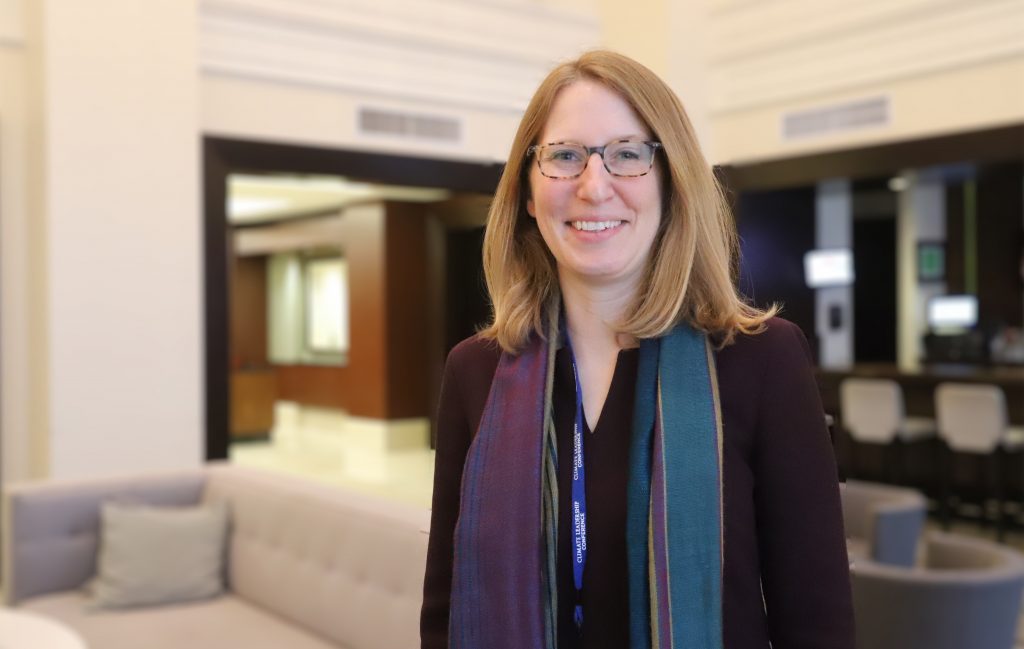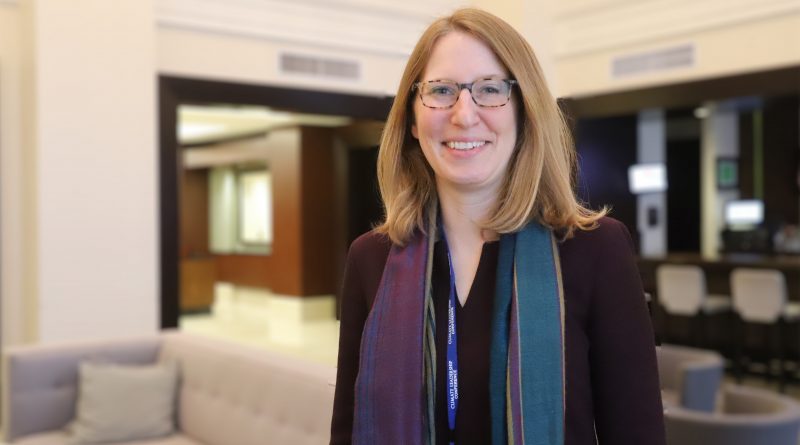Interview with the Rocky Mountain Institute’s Carla Frisch on America’s Pledge

At the Climate Leadership Conference, I got the opportunity to sit down with Carla Frisch, of the Rocky Mountain Institute, to talk about the work she is doing on America’s Pledge, a multifaceted climate initiative led by California Governor Jerry Brown and former New York mayor (and since-failed presidential candidate) Mike Bloomberg. Rocky Mountain Institute is also working with the World Resources Institute and the University of Maryland on this program. RMI’s Mike Banker, Marketing Manager for the Carbon Free Cities and States initiative, also joined us.
“A lot of our ethos comes from efficiency and integrative design, and we’ve broadened out since then and we’re now a climate organization with US work and international work. We’re interested in many of the same topics you are. in fact we have a mobility practice is that is working on
HANDBUILT: Why the specifically “subnational” focus? Is the idea that cities and states have to step in because the federal government isn’t particularly interested in these issues, or what?
CARLA: Exactly… right now, at this moment, the federal government is not taking the leadership on climate that it could. So, the folks that are filling that void are states, cities, and businesses… and they are stepping up in a way that the federal government is not, and they also have some authorities that the federal government does not– like building codes at the municipal level, and the ability to plan out what kind of city planning and transportation works best.
Carla shows us a chart that shows that America’s Pledge represents companies, states, and cities responsible for more than 50% of US emissions, 70% of US GDP, and 65% of population, and that these numbers have grown over the past three years.
CARLA: Large tech companies, for example, are committing to [the pledge] but don’t have a lot of [direct greenhouse gas emissions].
HANDBUILT: Anyone who is specifically not into it?
CARLA: […] there are some companies– but some of the oil and gas folks are making commitments. But if you look at the cutting-edge leaders, and if we’re able to accelerate what they’re doing and can bring [smaller companies] up to the level they’re working toward, we can reduce US emissions 37% by 2030 from a 2005 benchmark […] which is really significant. And then, if the federal government were to step back in, this is a question a lot of our international partners have, in 2021, and Congress and the Executive Branch were to take action in 2021-
HANDBUILT: –after an election we might be having this fall–
CARLA: –we’ve heard that there’s an election this fall, yes– or a miraculous turnaround of a policy position from an incumbent–
HANDBUILT: –I think that’s rather unlikely.
CARLA: Well, I won’t comment on that! We’re just making characterizations of what it could look like if there were climate-friendly policy coming out of the executive branch, and that could go really far to help us stick to our target of keeping temperature increase within the range of 1.5°(C) or less.
HANDBUILT: Climate change mitigation is great, but we’ve seen a lot of gesturalism, cleverly-packaged public relations, and aspirational platitudes from many of the corporate contributors to this space. Is there any sort of guideline that you would offer for how we can think about getting beyond gesturalism– companies that commit but might fail to actually produce the results they say they want to produce?
CARLA: So, we often track– what are the commitments of the folks now, how far can we get with those commitments, and what are the steps behind that commitment?
For both governments and corporates, there is usually some kind of official announcement or commitment, so it’s not just someone saying, “hey, we think we should do this,” and we also look at [the] follow-through. If a governor has made a commitment, have they passed that onto their state agencies and followed through with policies? is the state legislature following through with climate-friendly policy?
HANDBUILT: So, I mentioned equity and market transformation before. What are the concrete ways you can demonstrate benefit for the average citizen, especially historically marginalized communities?
CARLA: That’s a great question, and I think it’s very topical […] we always talk about dire consequences if we don’t take action, but what we’re looking at [if we do take action], is the quantifiable benefits– lower energy bills, better air quality, better water quality, a huge improvement in health outcomes, more diverse local economies, [energy production] from different sources of generation, and support for existing fossil fuel workers to transition [into new economic sectors]…
HANDBUILT: If the emissions reductions are based in quantifiable numbers and you can ensure follow-through or lack thereof by tracking those metrics, how do you measure the social impacts?
CARLA: One of the metrics that’s very clear that we can track is on health… we did some modeling where we quantify how reducing emissions from power plants– specifically coal and gas power plants- we can significantly reduce mortality rates across the US.
Another big one for using is what we call direct fuel use or burning gas in homes. We use gas for HVAC and for stoves, and what we’ve found looking at the health lit is that 60% of the time, if you have a gas stove and you don’t have your vent hood on, then the NOx levels inside are higher than [safe maximum] outside air quality standards… this has all kinds of implications for people with asthma, underlying respiratory conditions, and is an issue in public housing and lower income areas. One of the strategies in America’s Pledge… is making sure that all new buildings are all electric. If you don’t have a gas pipeline, it can’t leak or explode– and you don’t have that indoor air quality issue. And if you’re not using gas appliances, you don’t need to worry about carbon monoxide.
Read more on electrification of new construction:
“Berkeley Passes Nation’s 1st All-Electric Building Ordinance” (Jul. 2019)
HANDBUILT: I have to confess. The only thing that has kept me from going all electric is that I love cooking on a gas stove.
CARLA: Have you tried an induction stove? You can get real fine tuning with induction. And it heats up so fast!
HANDBUILT: I’ve said that when we replace our current stove, I’m certainly considering it.

Ok, last question. There seems to be this divergence between the boomer generation and younger generations, which is like, ‘let’s ride electric bikes to work’ as opposed to, ‘Let’s burn coal, because our forefathers burned coal, and why would we ever change’? How can we have a productive cultural conversation about this as we work to incentivize accountability from bigger companies with big carbon footprints?
CARLA: What we’ve heard from a lot of companies is that this becomes really important for talent attraction. When they’re trying to recruit the next generation of talent, they interview people, and those folks are asking, “What are you doing about climate? What are you doing about energy?” They feel that in order to recruit that next generation, they have to have [a good answer] to that question.
HANDBUILT: Well, that’s hopeful! Thank you so much for taking the time!
CARLA: Thank you!
Who knows? Clean air may be coming to us sooner than we think. Read more about America’s Pledge or read the latest report (PDF).
(This article is part of a series on the Climate Leadership Conference, which took place March 4-6 at the Westin Book Cadillac in downtown Detroit):
- Climate Leadership Conference, Day 1: Unpacking Lessons Learned and Issues Highlighted
- Interview with the Rocky Mountain Institute’s Carla Frisch on America’s Pledge (this article)
- Climate Leadership Conference: Decarbonizing Transportation, One Electric SUV At A Time?
- Climate Leadership Conference: Practical Energy Finance Solutions
- Epilogue: We Cannot Stop Asking The Tough Questions




